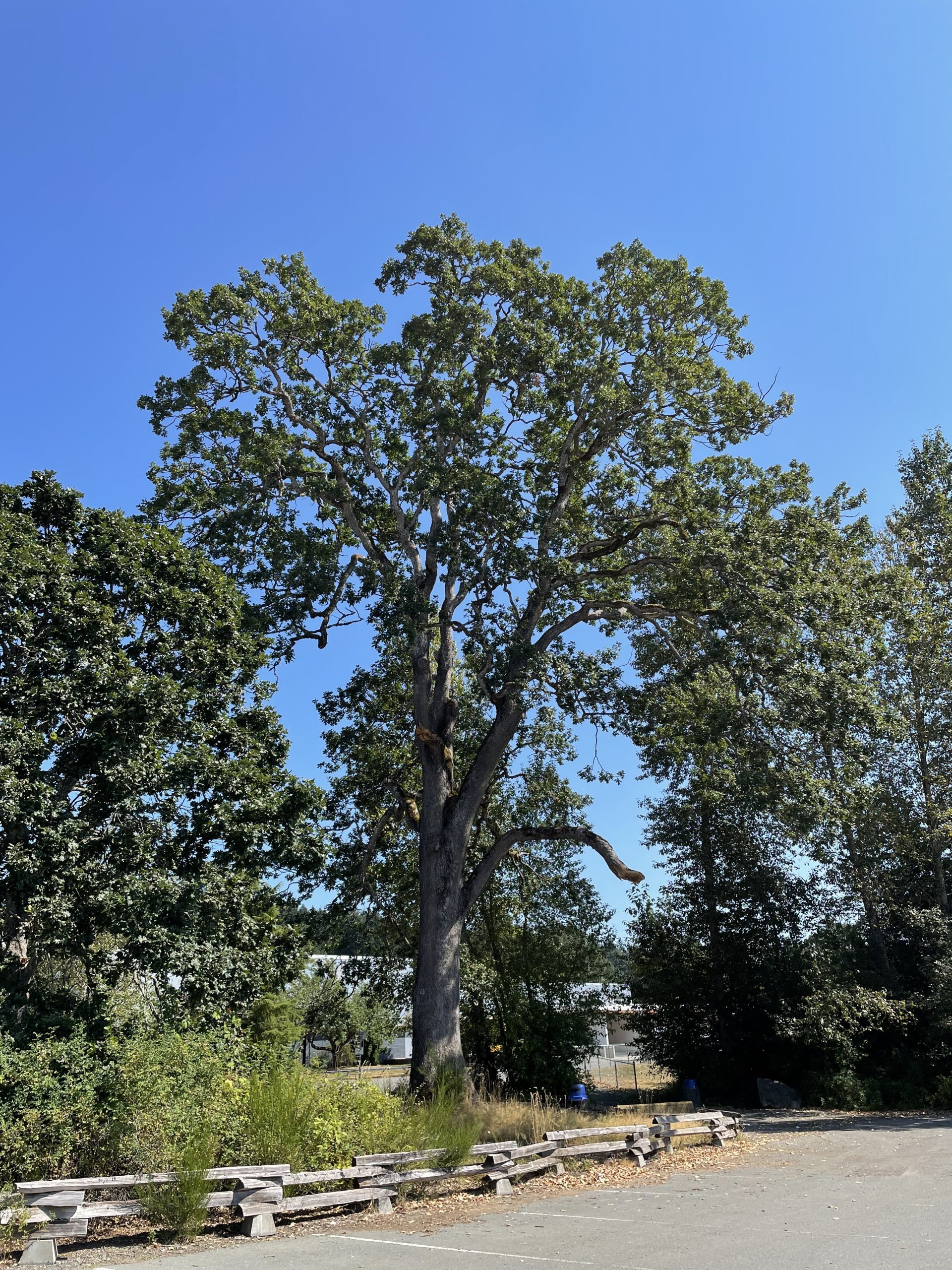Technician Tuesday Report – Solarization Experiment and Gary Oak Surveying – August, 30
At Glen Urquhart, Renée and Jay set up a solarization experiment. This is a restoration technique that will eliminate unwanted vegetation to prepare the area for planting Camas seeds and other native vegetation. They staked a large plastic sheet tight to the ground where the invasive plants were growing. The soil under the plastic cover heats up, killing the weeds and any weed seeds deep in the soil. Once free of invasives, this area will act as a temporary nursery; native species will be planted and once they are big and healthy and the season is right, they will be replanted elsewhere in the valley.
Renée also began preliminary work for a new citizen science program that may come out this fall called “Host a Garry Oak” where acorns that have been collected by Project Watershed from local Garry Oak trees will be given to members of the community to be potted and cared for over the winter and spring. Renée surveyed Courtenay for locations of Garry Oaks and noted which have acorns and which are not producing this year. It’s been a fun scavenger hunt! Renée also made pamphlets about Garry Oak ecosystems and the “Host a Garry Oak” project, which may be available for distribution in the weeks to come.
Did you Know…
Garry Oaks are one of many tree species that produce large amounts of seeds at a seemingly unpredictable rate every few years that is synchronized over large areas. This is known as “seed masting”.
The trigger for a mast year is not fully understood but one hypothesis is predator satiation. In this theory, masting helps plants evade seed predation by starving predators during years of minimal seed production and satiating predators in mast years.
Related Posts
Gwen Janz
Meet our new Forage Fish Lead Biologist!
Eelgrass Update
In the fall our restoration team surveyed the three eelgrass beds which were planted with the help of our volunteers back in June. The beds are looking healthy!
Kus-kus-sum: End of Season Wrap-up
Now that we have put the Kus-kus-sum site to bed for the winter, we wanted to give you all a little update on how things progressed this season – lots happened!
Kate McKeown
Meet our new Forage Fish Technician!
Greenshores at Dyke Road Park – Reimagining a Park
On September 20 and 21, over 20 people were on site to help with planting at the Comox Valley Regional District’s (CVRD) Dyke Road Park redevelopment project.
Gartley Beach Green Shores for Homes Project
Project Watershed is teaming up with the CVRD and the Stewardship Centre for BC to do some shoreline restoration at Gartley Beach in Royston.



